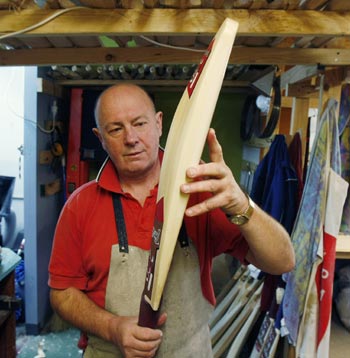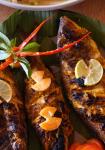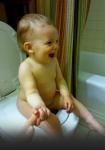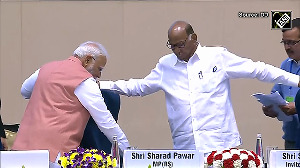When Australian Lachlan Fisher watches the third Ashes Test starting Thursday, he'll be keeping his eye more on the cricket bats used by the players than the game, with his rivalry directed at English bat-makers.
Fisher, an ardent cricketer, has turned his passion into his living and for the past 16 years has been handcrafting tailored bats from Australian-grown English Willow trees grown on his farm in the Macedon ranges, 80 kilometres (49.71) north west of Melbourne in the state of Victoria.
"It's definitely unique in Australia. There's no one else doing what I do," said Fisher, who boasts that he is the only Australian manufacturer of handcrafted cricket bats from Australian-grown willow trees.
 Fisher, who has a farming and visual arts background, found himself getting into the cricket bat industry dominated by English craftsmen when he answered a job advertisement for someone who could work unsupervised and discovered he was about to learn how to make cricket bats.
Fisher, who has a farming and visual arts background, found himself getting into the cricket bat industry dominated by English craftsmen when he answered a job advertisement for someone who could work unsupervised and discovered he was about to learn how to make cricket bats.
Now he admits it's a labour of love.
"The skill in bat making is being able to use the tools and making the bat feel, in the batsman's hands, like it's quite light and balanced," said Fisher, who runs a small shop in Melbourne to sell his bats, some of which are made-to-order.
He doesn't sell his unique bats to famous cricketers because they are under contractual agreements regarding their equipment.
He became so passionate about his craft that he now grows up to 200 English Willows on his farm in Victoria where the weather is cold enough to allow the trees to grow slowly to achieve the fine-grain needed for good cricket bats.
He also grows up to 3,000 willow under contract on other properties in Victoria to ensure he has sufficient supplies for his bats as it takes an average of 15 years to harvest a tree.
Each tree can be cut down into about 32 to 40 bats with Fisher carrying out every step in the process from growing the tree to carving the bat.
"If you look at it in weight terms each bat weighs about 60 lbs (27.22kg) and the tree weights over 1,000 lbs, so the percentage of usable timber is small, there's a lot of waste in one tree," he added.
While he uses English Willow for the bat, he uses Manau cane for the handle which he sources from Indonesia.
Fisher produces about 30-40 bats a week which he sells to players from semi-professional down to 4th, 5th and 6th grade cricket players at a price of between $350 and $500. The Internet has opened up his market and he now sells to cricketers in England and Canada as well.
But as age takes its toll on professional cricketers, it also takes it toll on cricketing craftsmen.
"Age is probably the biggest challenge. It's hard going making cricket bats by hand. You get repetitive strain injury and I carry that all the time," he said.








 © 2025
© 2025